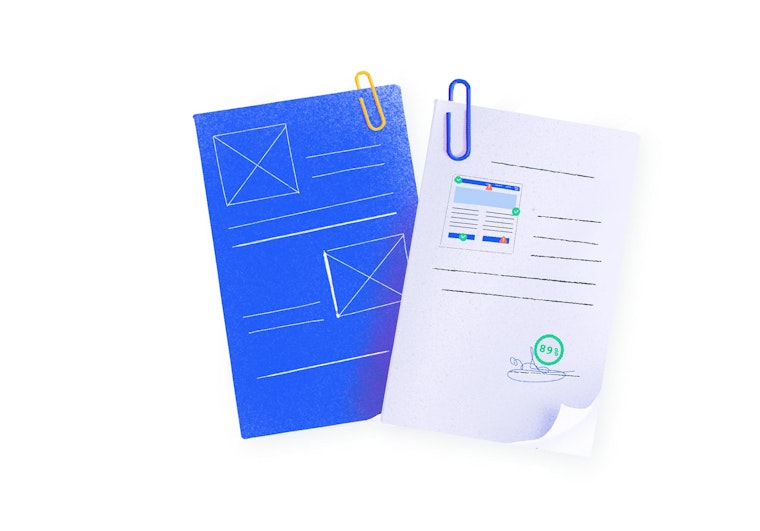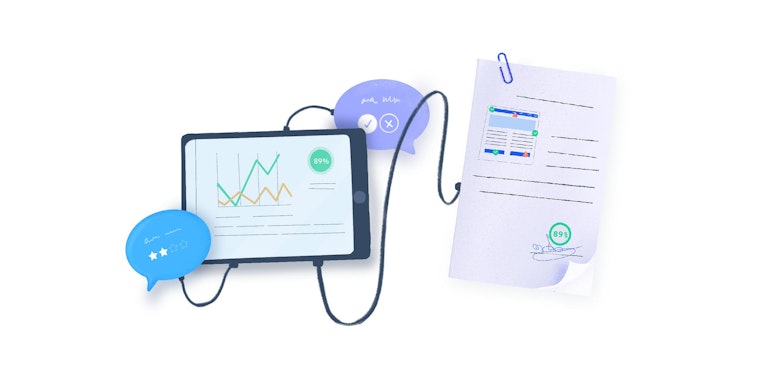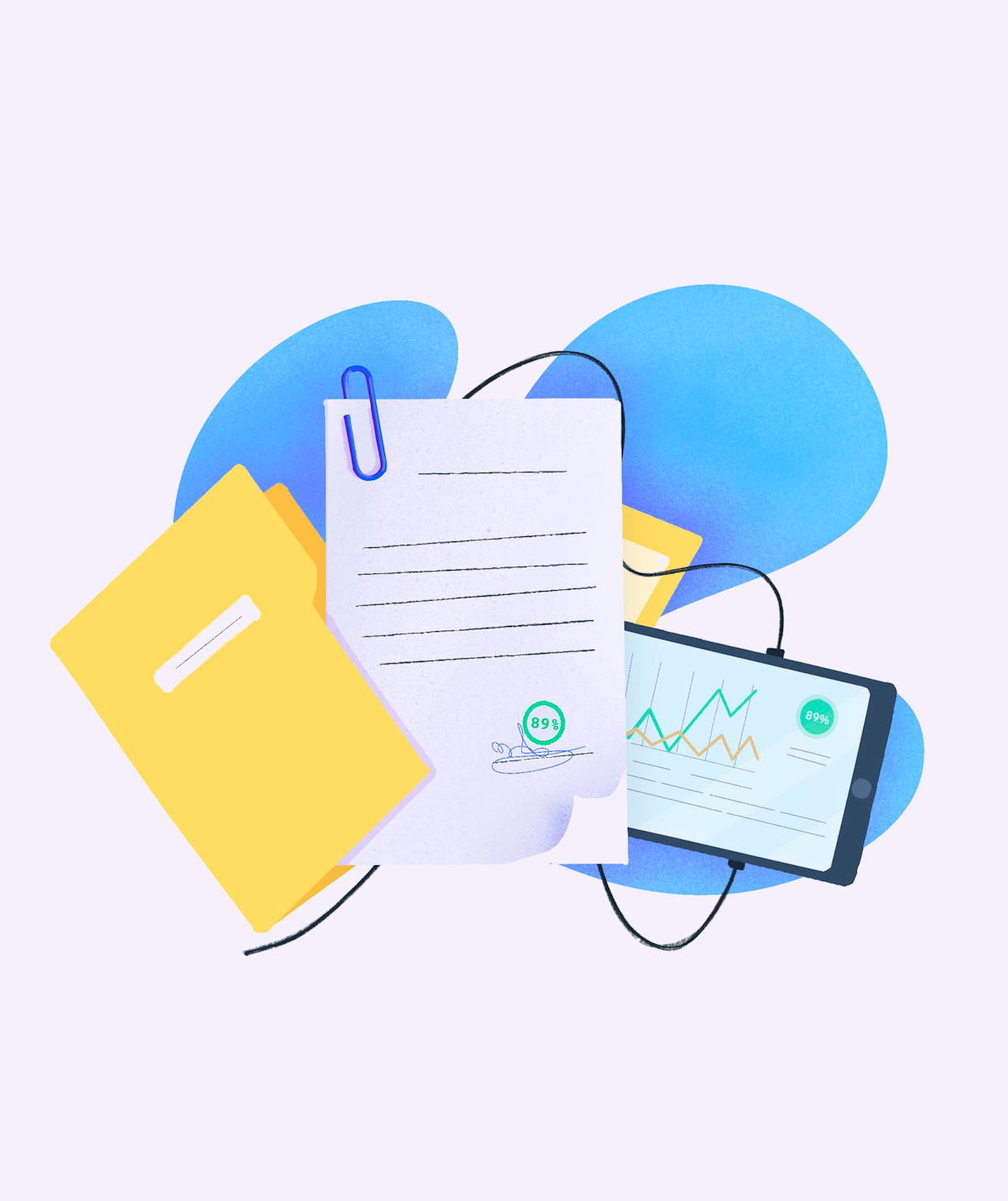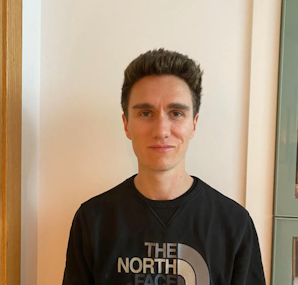When a potential client asks for a design proposal, freelance designers can react in one of two ways:
- Google a cookie-cutter PDF proposal template that ticks all the boxes. Why do extra work when you’re not getting paid for it?
- Seize the opportunity to impress the client—and set their expectations of your work going forward.
This article is for people who embrace the second mindset. Because while it’s true that clients use competing design proposals to decide who they’ll hire for a project—so yours needs to stand out—they also provide a vital framework you can refer to throughout the project.
In other words, a solid proposal can act as a source of truth that protects you as a freelancer from a client’s goals or expectations shifting halfway through a project. And let’s face it, we’ve all been there.
One way to make your proposal rise above the competition and set the project on course for success? Include user research. As a vital part of the design process, making user research and testing part of your proposal immediately demonstrates the value your design will add for your prospective client.
Show them that the foundation of great design is understanding their users, and you’ll also get buy-in to do more user testing further down the line. Leave it out, and the client might see it as an optional part of the process—making it almost impossible for you to design user-centered solutions.
But before we dive into the details of how user research can elevate your design proposal, let’s remind ourselves of what a good proposal template should look like—and what it needs to achieve.
What is a design proposal?

A design proposal is a document or a series of slides that set out your plan for a design project. Normally requested by clients, it’s a way for them to compare the value that different designers are offering them. But value ≠ price. Branding expert Arek Dvornechuck explains:
The best fit for clients doesn't mean the least expensive option, or the best design portfolio. It means that you can move the needle for them and help them with something they need to get done.
Share
So a solid design proposal template doesn’t need to show off your fancy design skills—or even any design skills at all. But it should clearly explain your client’s problem or objective, how your web design will help their business, and why you personally are right for the job.
And crucially, you need to show new clients that you’re the best option for their business in terms they understand. Remember, your client probably doesn’t know design. That’s why they’ve come to you.
But it’s also important to make one thing clear: design proposals don’t have to exist purely for your client’s benefit.
If you approach them the right way, they can guide the design process, keep the project scope in check, and align yours and your client’s expectations. So before you start a proposal, make sure to have productive conversations with the client on the goals, budget, and scope of the project. As designer Ran Segall says:
Your design proposal should never surprise a client.
Share
Instead, it should be a clear, mutually agreed summary of what you both understand about the project.
Why do clients and designers need proposals?
Companies and individuals have so many options to choose from when looking for design services. Clients ask for design proposals because they want to compare your offer with those of other designers and find the best fit for the project.
A well-written design proposal clearly defines what you’ll be doing for your clients and how your proposed solution will address their needs. It allows you to show the value that you're offering and communicate that you're the right person for the job.
Also, a design proposal will help you and your clients set expectations from the beginning. Clearly stating what you'll deliver, when, and how much the service will cost is vital for the project's success.
How to create a design proposal
So, with both your client’s and your own interests in mind, here’s what your proposal writing should cover:
- Cover page: an elegant front cover with a simple, professional design
- Table of contents: a breakdown of your proposal sections with page numbers for easy access
- Project overview: an executive summary of the project based on your conversations with the client. Use the client’s own words to avoid misunderstandings. If their definition of the project is ambiguous, you need to clear this up before starting the proposal.
- Objective: this should be measurable and clearly defined (e.g., increase conversions). If a project has more than one objective, make sure you and the client agree on which takes priority.
- "Why me?" section: convince the client that you’re the best person for the job. They’ve probably seen your work already, so in this section, answer questions like: Why are you interested in solving this problem? Or helping this business? You can also include testimonials from previous clients and information about your design services.
- Scope: clearly define the limits of what you’ll design for the client as part of this project and budget. For example, you might be working on a logo design for a new brand. Defining the scope in the design proposal helps establish the purview of the project and sets realistic expectations.
- Timeline: present a timeline that’s realistic for you. In my experience, most design clients would rather have something done right than done fast. Leave more time than you think you’ll need, as this sets your clients' expectations and gives you breathing space when there are complications.
- Deliverables: write a comprehensive list of what you’ll deliver the client by the end of the project. Make sure they know that anything extra will require adjusting the budget and scope.
- Terms & conditions: check out these tips for writing air-tight T&Cs
- Contact info: seems obvious, but don’t forget!
Most standard proposal templates cover these bases. But what if you want yours to be above and beyond ‘standard’? Let’s talk about how user research can make your design proposal stand out—and guide your work on a project going forward.
Why you should include user research in your design proposal

There are many benefits of including user research in the proposal process. From helping you discover user needs to benchmarking the usability of the current design or competitors, user research can help you succeed. Here’s how.
User research is vital, so get buy-in asap
As a designer, it’s your job to demonstrate to the potential client that there’s no such thing as great design without user research. Show this in the UX research plan, and your client will buy into this idea. Leave it until later, and it’ll be harder to secure time and budget for further user research when the time comes. Erika Hall from Mule Design Studio explains:
When research is defined as a type of work outside of design, it’s easy to define gathering evidence as something extra and find reasons not to do it.
Erika Hall
Share
But while the importance of research and testing might be obvious to you as a designer, your client might not instantly be convinced that it helps their business. So let’s think about how you can make this argument with your client’s perspective in mind.
The main idea of doing user testing is to learn about the goals of the people who will use your client’s product in the future. It’s a deeper way for both you and the client to understand their business goals from a user’s perspective. This explanation from UX designer Darko Čengija breaks down the importance of user research in a way your client will understand:
People buy things because they want to achieve something. If your product helps people achieve their goal, they’ll love it, they’ll continue to use it, and they’ll recommend it to others. So, you need to know how they use it.
Share
In other words, your client’s real goal is always to help users achieve their goals. Without understanding the importance of user testing, there’s a good chance your client won’t explain their objective in this way. But by re-framing their problem from a user’s perspective, you can align their business objectives with the project’s.
Take a library app, for example. The business goal of ‘increasing conversions’ could be related to ‘helping more people find the right book for them,’ from a user’s perspective. Show evidence from user research and usability testing that your new design will help more people find books that they like, and you’ll create a link between user research and the business goal in the client’s mind.
Do this at the proposal stage, and they’re much more likely to see user research as a crucial part of your design services and deliverables.
Proposal-stage user research = success further down the line
Once you’ve introduced usability data early in the process, it’s easier to get approval on future iterations of your design. With the user testing data from your design proposal as a benchmark, you now have solid evidence to base future designs on. To find out what’s working and what isn’t, you can do more rounds of usability testing, and compare the results with your early data.
This potentially saves a lot of back and forth with the client if they’re unsure whether to move forward with a design—which is always a danger if neither of you has data to back up your points. Here’s Martin Brady from Zengenti, who we’ll hear more from later:
With an evidence-based approach, it’s much easier to get projects signed off and deliver on time.
Martin Brady
Senior Experience Designer @ Zengenti
Share
Doing user testing ASAP can also prevent the need for big design overhauls later on if a fundamental part of your design isn’t working for users. And fewer iterations means fewer headaches. UX expert Nick Babich agrees:
“If you can invest energy in testing early and prevent problems from happening in the first place, you will save a tremendous amount of time later.”
Just as clearly defining scope, design principles and objectives in your design proposal provides a strong foundation for a project, including user testing future-proofs your design process with solid data, and reassures the client that your designs going forward will be backed by evidence.
Your project proposal will stand out from the competition
Whether it's product design or graphic design, pretty much every designer understands that user testing is important. But not as many start their research at the proposal stage. Since the immediate purpose of any project proposal is to win a project, telling the client what they want to hear can seem more appealing than challenging their perspective on the importance of user research.
But if a client hasn’t mentioned anything about user testing, that doesn’t mean they’re against investing in it—especially if it’ll help their business. Here’s Arek again:
To put it simply: you must appear as the least risky option.
Share
By showing the client solid evidence to back your proposal, you’re delivering the client fresh, data-driven insights before the project even starts. This is especially great value if the client hasn’t done much previous user testing themselves. As a result, your offer will seem like a more valuable business proposal than others that don’t include testing.
Starting to see why how usability testing can help you create a winning proposal? Here’s how a real company does it.
Case study: Zengenti

Zengenti team
According to UK-based content management software company Zengenti, data from usability testing has “been vital in helping us win projects.”
They mostly work with big public sector clients like universities and councils, which have huge numbers of users. Changing their website design is a big deal for them. So providing a quantifiable idea of how a proposed design would help users makes Zengenti a safer option than other pitching designers.
Zengenti starts by collecting insights at the discovery phase, where team members spend time figuring out what both the client and their users want to achieve.
We interview key stakeholders from the company, and equally important, we look at user needs, analytics, and any research that has already been done.
Martin Brady
Senior Experience Designer @ Zengenti
Share
Tip: Before you start your design proposal, ask the client if you can review any usability data, user interviews, or user research they already have.
Next, the Zengenti team makes a quick prototype design with the tasks they’ve identified as most important for what users want to achieve. Then they test the usability of their prototype with Maze to get results fast.
We do a lot of early prototyping and testing with our clients’ actual users. If we have to recruit externally, we survey participants to make sure we get the right people.
Martin Brady
Senior Experience Designer @ Zengenti
Share
Tip: Try to get access to your client’s users as early as possible, even if it's just via social media. The product's current end-users are the most suitable participants for user research.
Of course, conducting user tests the traditional way with in-person sessions is a lot of effort for a design proposal—and it’ll probably take too long to set up. That’s why Zengenti uses Maze to quickly share links for remote usability tests, which people can easily complete in their own time. They’ve found remote testing has other advantages too—besides being fast and easy:
We’re actually getting better results that reflect what people would really be doing in the product, as opposed to what they’ve been pressured to do while someone’s recording them. Maze’s unmoderated approach is really valuable.
Martin Brady
Senior Experience Designer @ Zengenti
Share
Tip: One important rule in usability testing is the difference between what users say vs. what they do. To create the best UX designs, measure and pay attention to both.
By doing user research and showing the value of usability testing from the proposal stage, Zengenti automatically has an edge over other design pitches that only focus on the design brief. And thinking about user needs early doesn’t just win projects—it also guides your work further down the line.
Make your next design proposal data-informed
When putting together a design proposal, it’s easy to focus on making yourself look good by thinking about what the client wants to hear. And in general, both of these instincts are correct.
But user research is an integral part of the design process—without it, products and websites aren’t built to address user goals and pain points. And ultimately, your client’s success depends on their users’ success. So it’s super important to devote time to understanding users and conducting early usability tests. Then you can use the results in your proposal to show your client the value of user testing at the first opportunity.
Down the line, after you’ve won the project, your future self will thank you for getting buy-in for user testing at the start, and for providing early-stage results to work with.
And as a bonus, you’ll instantly stand out from other designers you’re competing with.
Take a look at these design proposal templates to start creating yours now.




